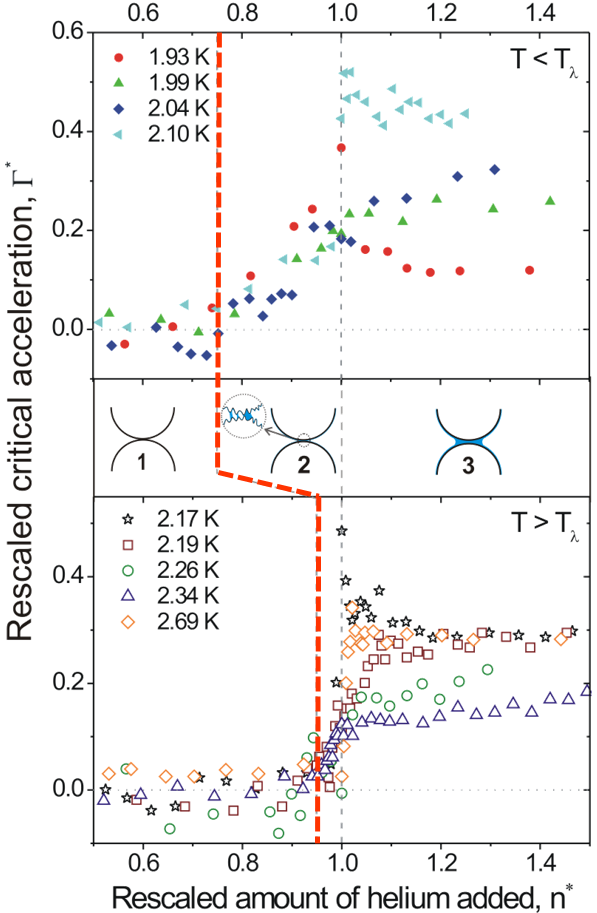![]() German
German
How wet is wet?
An answer with liquid Helium |
|||||
Sketch of the helium wetting setup. Some pictures of the setup can be found here.
|
Using
the critical acceleration to fluidize the granular layer as the order
parameter, we quantify how the amount of wetting liquid added changes
the rigidity of the material. Dry granular media fluidizes at a driving acceleration of around 1.2g with g graviational acceleration, while for wet granular media the critical acceleration for fluidization will increase monotonically with the amount of wetting liquid added until a plateau regime is reached. The difference between critical acceleration for dry and wet granular media represents the influence from capillary forces. This experiment is to explore the wetting of granular media by liquid helium, which wets almost all the substrate and have a phase transition from normal fluid (helium I) to superfluid (helium II) while it is cooled below the 'lambda' point (2.17K for bulk helium). |
 |
For
wetting by helium I, the critical acceleration for fluidization shows a steep
increase close to the saturation of the vapor pressure in the sample cell.
While for helium II wetting, the critical acceleration starts to increase at
about 75% saturation (see the red dash line), indicating that capillary bridges are enhanced by the
superflow of unsaturated helium film. The enhancement by superfluid could be understood in the following way: suppose two particles start to fluidize and collide with each other, there will appear a slightly heat up spot at the colliding point, which facilitates the fountain effect so that superfluid part of the helium film tends to flow to this point and enhance the capillary bridges between the two particles. |
Reference
- "Fluidization of granular media wetted by liquid 4helium",Kai Huang, Masoud Sohaili, Matthias Schroeter and Stephan Herminghaus, Phys.Rev. E 79, 010301(R) (2009), doi:10.1103/PhysRevE.79.010301, cond-mat/0810.3191
Universität Bayreuth -




